Dyson Ball Animal vacuum review: a super-sucky upright
Dyson Ball Animal review: two-minute review
The Dyson Ball Animal on review here is an update on the Ball Animal 2. In the UK and Australia it's just referred to as the Ball Animal, whereas in the US, it's called the Ball Animal 3.
Suffixes like 'Extra', 'Origin' and 'Multi-Floor' refer to the selection of tools included – the base model is the same.
For this review, I tested the UK Dyson Ball Multi-floor. Note, there may be minor differences between different countries' models.
The Dyson Ball Animal is an upright, corded vacuum that prioritizes suction power and dust capacity over a lightweight form factor. Once upon a time there were two camps of vacuum buyer – the upright evangelists versus the cylinder snobs, and never the twain did meet. Nowadays most people have converted to cordless stick vacuums, and never looked back. But clearly there are a few lingering souls who remain loyal to corded vacuums and, for those wedded to the corded upright in particular, Dyson's Ball Animal remains king.
I tried one out to see how it compares to the rest of today's best upright vacuums, and if it's worth considering over one of the best cordless vacuums on the market. This generation launched in 2022 and is an update on the Ball Animal 2 – although generally it's just referred to as the Ball Animal, no number, aside from in the US, where they typically put a 3 on there.
The Ball Animal boasts multiple filtration systems (with lots of engineering jargon to make them sound extra whizzy) that make it popular with allergy sufferers. There’s no doubt it is incredibly sucky and drags dust from the very core of carpets, and I also appreciated the massive bin capacity, which felt like a treat after the daily emptying demanded by most cordless vacuums.
At times the suction power can make it a tough ride – you need Popeye-grade muscles to push this vacuum along a deep-pile carpet – and the pull-out hose is a little stiff and unwieldy. Then there’s the cord. Once you’ve gone cordless, it really is hard to tolerate this annoying trip hazard.
Disclaimer: I have never owned (or wanted to own) an upright vacuum in my 40+ years on this planet but in the interests of fairness to those who want a new one, I've tried really hard to ignore my prejudices when testing this vacuum in my four-bed Victorian family home. Instead, I focused on the genuine pros and cons of the Dyson Ball Animal vacuum to suss out it if could be considered the best Dyson vacuum for anyone. Read on for my full review.
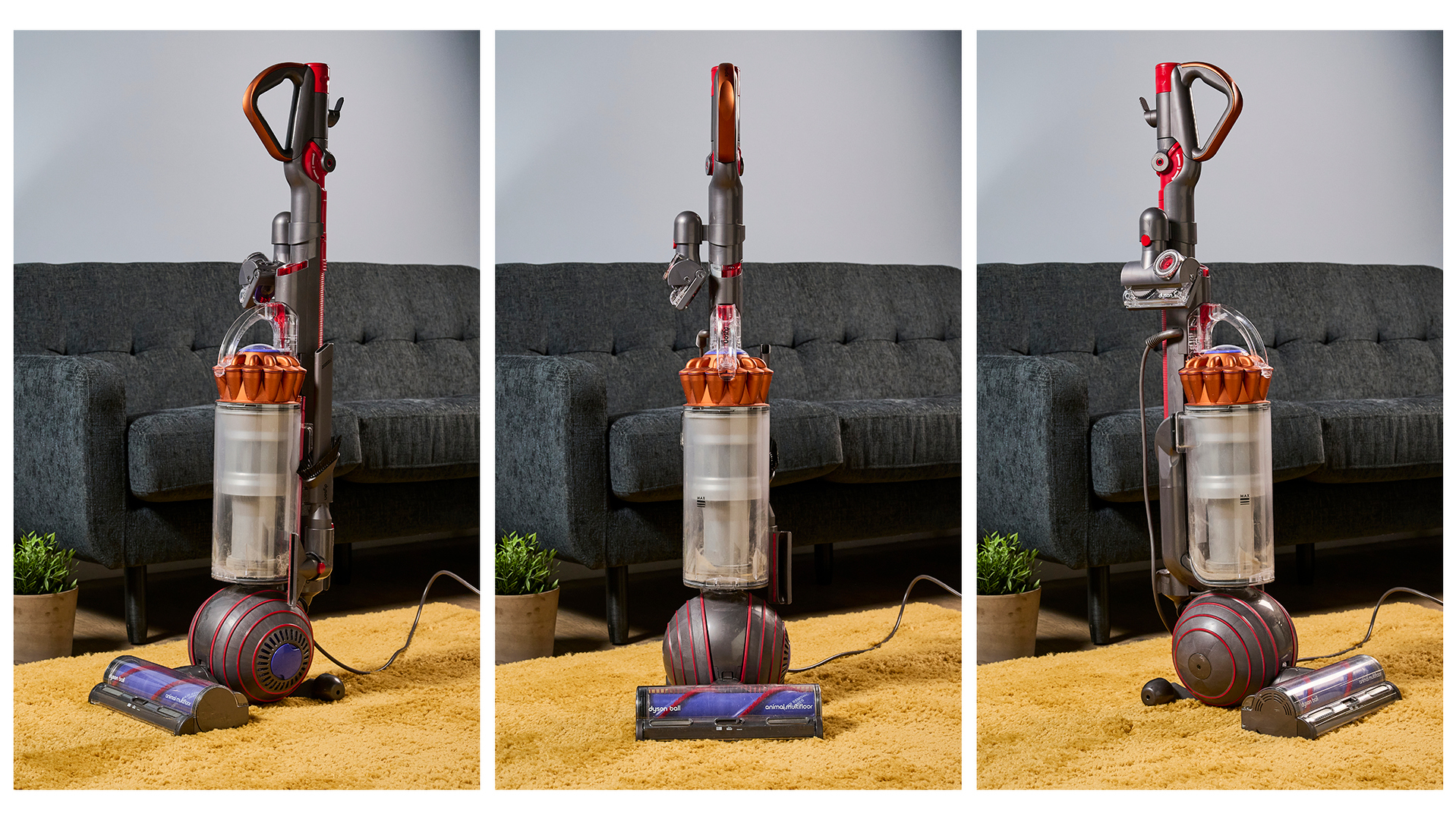
Dyson Ball Animal review: price & availability
- List price: from $499.99 / £279.99 / AU$599
- Launched: 2022
- Prices vary for different iterations (with different tools)
As with all Dyson vacuums, there are a few different variations available, just to keep buyers on their toes. Generally speaking, the difference is just the selection of tools included – the actual vacuum is the same. There are also slightly different naming conventions in different parts of the world. To get a general picture of how much you can expect to pay for a Ball Animal, I'll base this section on availability and pricing when you buy direct from Dyson, but be aware there will likely be more options, and different deals available via third party retailers.
In the US, it's a little tricky to figure out which models are gen 2 and which are gen 3. After some sleuthing, it looks like the two third-gen models are the Ball Animal 3 Extra for $499.99 or the Ball Animal 3 Complete for $549.99. You can still get the Ball Animal 2, in various iterations, in some places, too.
In the UK, it's the regular Ball Animal for £279.99, the Ball Animal Origin for £329.99 (down to £229.99 at time of writing), the Ball Animal Multi-floor for £379.99 (this is the version I tested) or the Ball Animal Complete for £429.99.
In Australia, you'll find the Dyson Ball Animal Origin for AU$599, down to AU$449 at time of checking.
All that means that generally speaking, the Ball Animal sits in the mid-range bracket, based on TechRadar's price bands for vacuums. It's also typically the cheapest Dyson you can get – and much more affordable than any of the cordless models. The Dyson V8 (the oldest and cheapest model in the current lineup at time of writing) is around $470 / £330 / AU$800. In short, the price of the Ball Animal upright is incredibly reasonable and you’re getting a lot of machine and power for your money.
As with all home appliances, shopping events like the Black Friday sales tend to be a good time to snag a Dyson vacuum deal.
- Value for money score: 4 out of 5
Dyson Ball Animal specs
Dyson Ball Animal review: design
- Upright corded vacuum with ball that allows floorhead to pivot
- Wand can be extended on flexible hose for harder-to-reach areas
- Solidly built, but bulky and heavy compared to stick vacs
There’s no denying the Dyson Ball Animal Multi-floor has an exciting design, almost futuristic, and I love the vibrant copper and red colorway of my review model. That said, I’d want to store it in a utility room or similar, as it’s too big and out-there – 42.13 x 11.10 x 15.24" / 106.5 x 28 x 39cm (H x W x D) – to sit quietly in corner of the kitchen or living room.
Unboxing was easy and I appreciated the thought that had gone into the packaging on the eco front; the components were all securely contained in recyclable cardboard rather than yards of plastic.
You have to download the full instruction manual (another saving of resources) but a handy fold-out leaflet illustrated how to assemble. The hardest part was clicking the main roller head on, but only because the vacuum is heavy. Then it was just a case of clicking various pipes together in three steps, and then loading on the attachments. Three of attachments have a permanent home on the vacuum, which means they’re close to hand when you need them.
This vacuum isn’t terribly futuristic on the user tech front. There are no complicated LED displays or program menus to master, just a solid red on/off switch and another next to it to turn the electric roller brush bar on/off. Dyson recommends turning the brush off when vacuuming hard floors, and I later explain why.
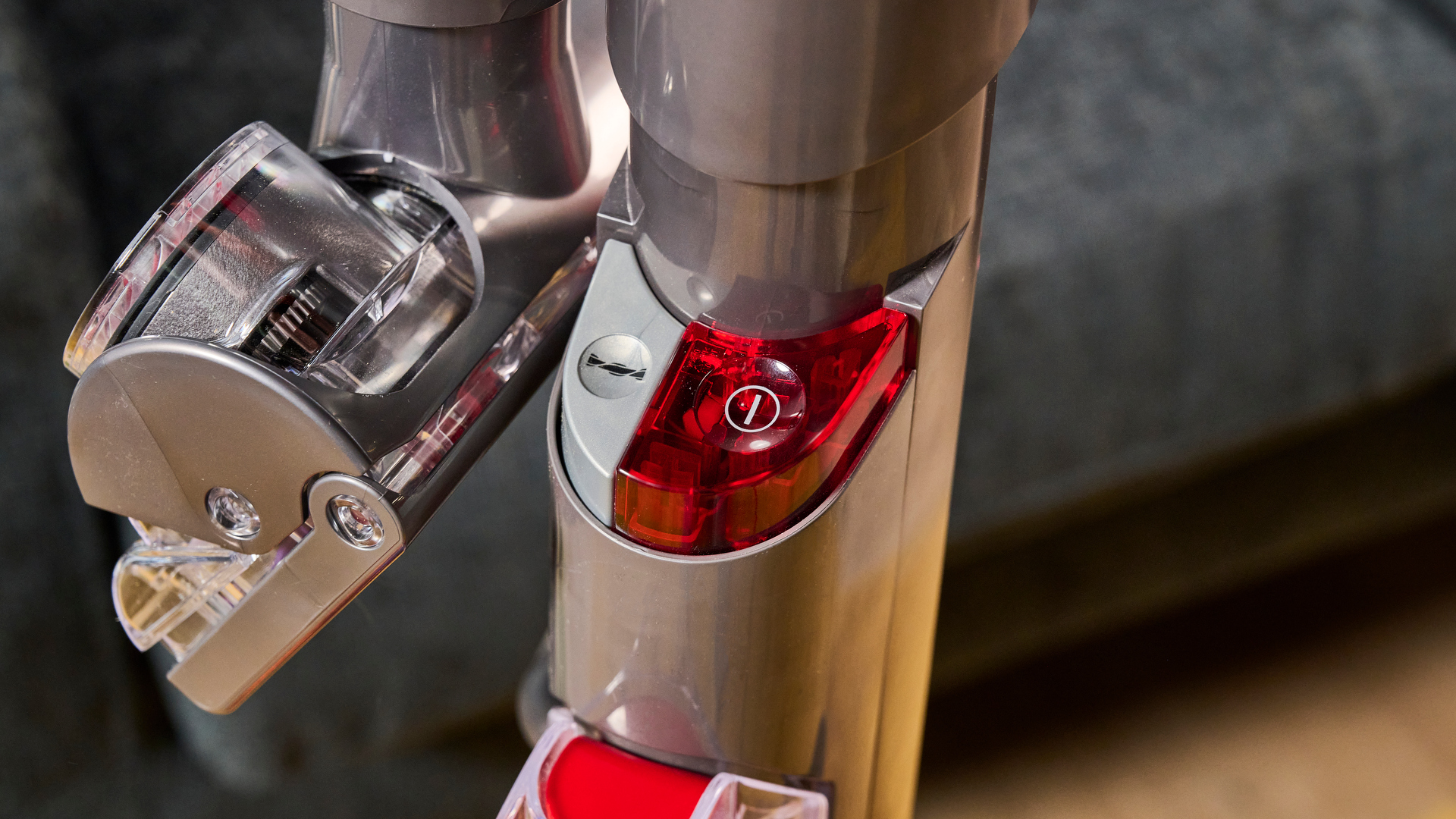
Emptying the bin is super easy, you just unclip the bin, carry it to your trash can and then press a button to release the flap at the bottom. I was less impressed by the cable tidy, which is manual and tedious. Not least because there’s 10m of cable to wind and unwind from the two clips at the back. It’s good exercise though!
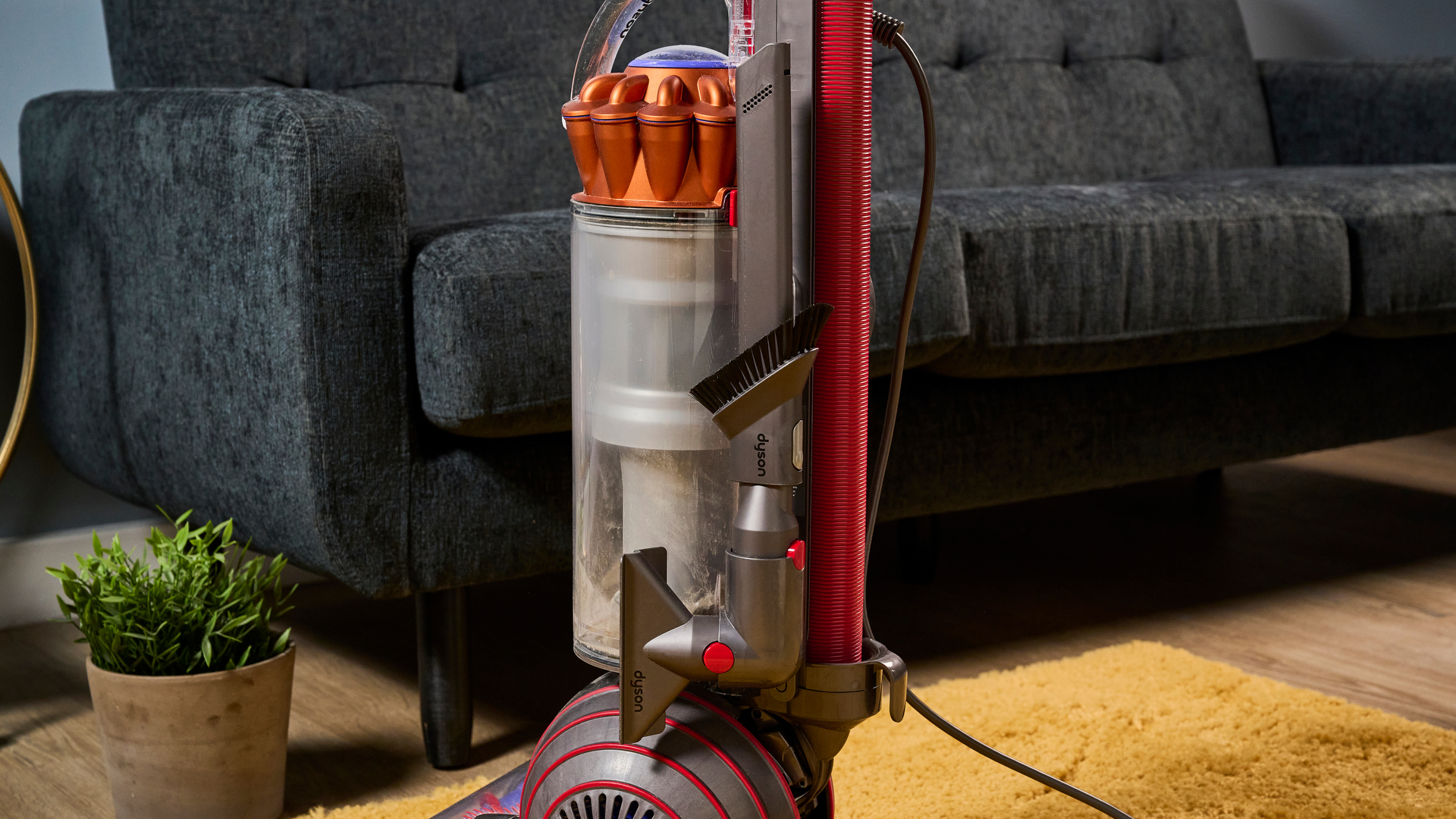
There are two ways to clean with the Ball Animal: the main method is with the upright unit and its massive floorhead, which is supported by a large ball in an attempt to make it easier to maneuver and twist around corners. Then there’s the high-reach wand that pulls out with the handle and has a 4m flexible hose that’s aimed at getting into the corners of ceilings, under furniture and up the stairs. The handle is hinged to make the hose more flexible, and it almost works like a traditional cylinder vacuum if you attach the flat floor head. In theory, anyway.
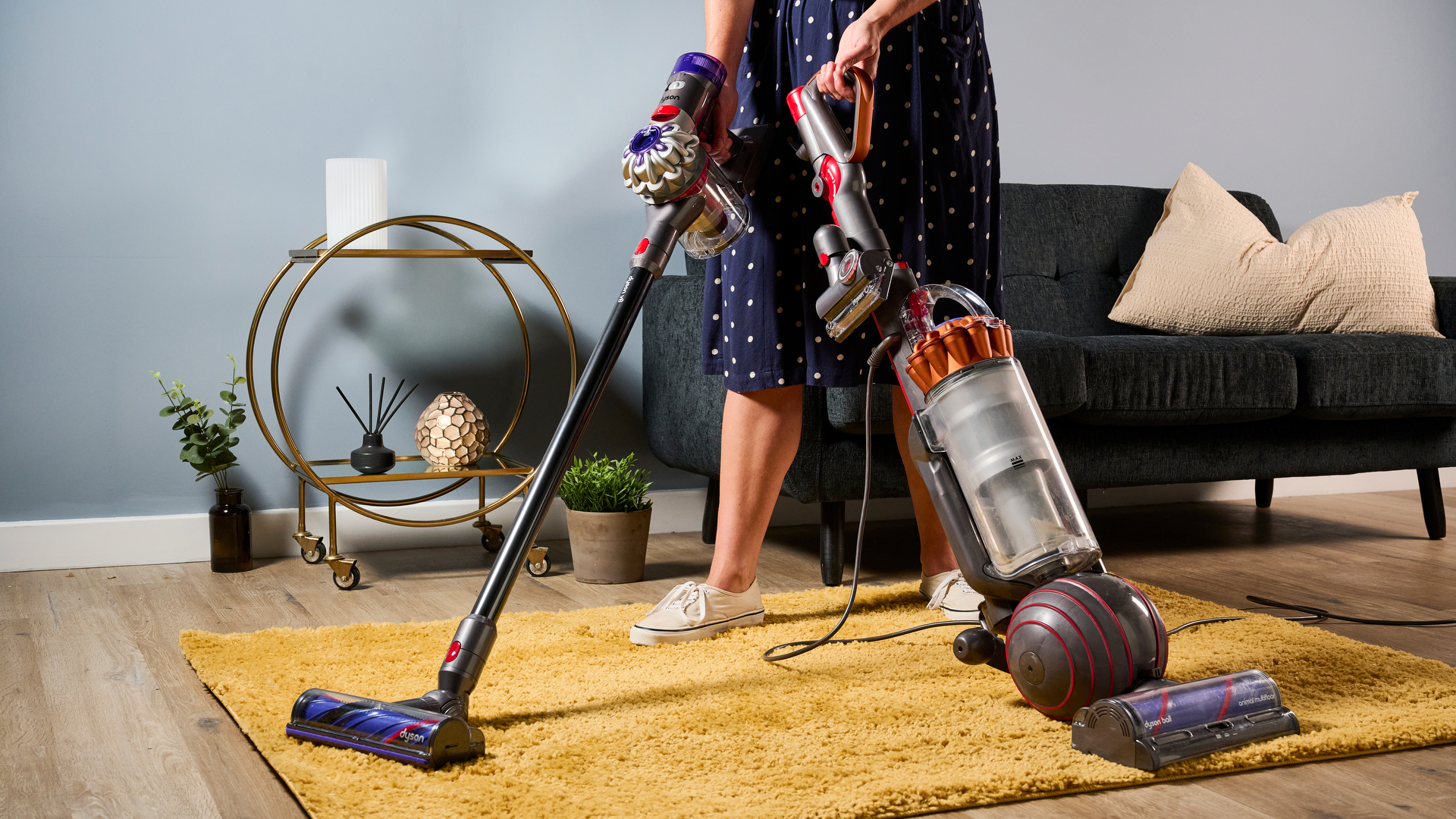
One of the main downsides I immediately noticed with the Ball Animal is that it’s just so cumbersome. Perhaps it's because I am not used to uprights but I just found it heavy, and not in a good way. The upside is that with this weight comes durability and a sense of robustness.
The other thing I spotted is that, while the attachments do clip on at various points of the main build, they’re not terribly easy to get on and off but this might improve with time and use as the connections soften. The lowest attachment is clipped the wrong way for easy access when vacuuming.
- Design score: 3 out of 5
Dyson Ball Animal review: performance
- Extraordinarily powerful
- Best on carpets
- Big and noisy
My first foray with the Dyson Ball Animal involved tackling the carpets upstairs – four bedrooms (approx. 4m sq each) and a generous landing to be precise. It’s hard to beat any Dyson on carpet-cleaning power and I was excited (sad, I know) to see just how much dirt it would suction up.
Our carpets are less than six months old, and the upstairs is vacuumed once a week. No dogs are allowed upstairs and only three days had passed since the last clean, but the Dyson Ball Animal still managed to half-fill its 1.8L capacity bin. Kinda grim, but it did look like a lot of the load was carpet fibers, which was slightly worrying!
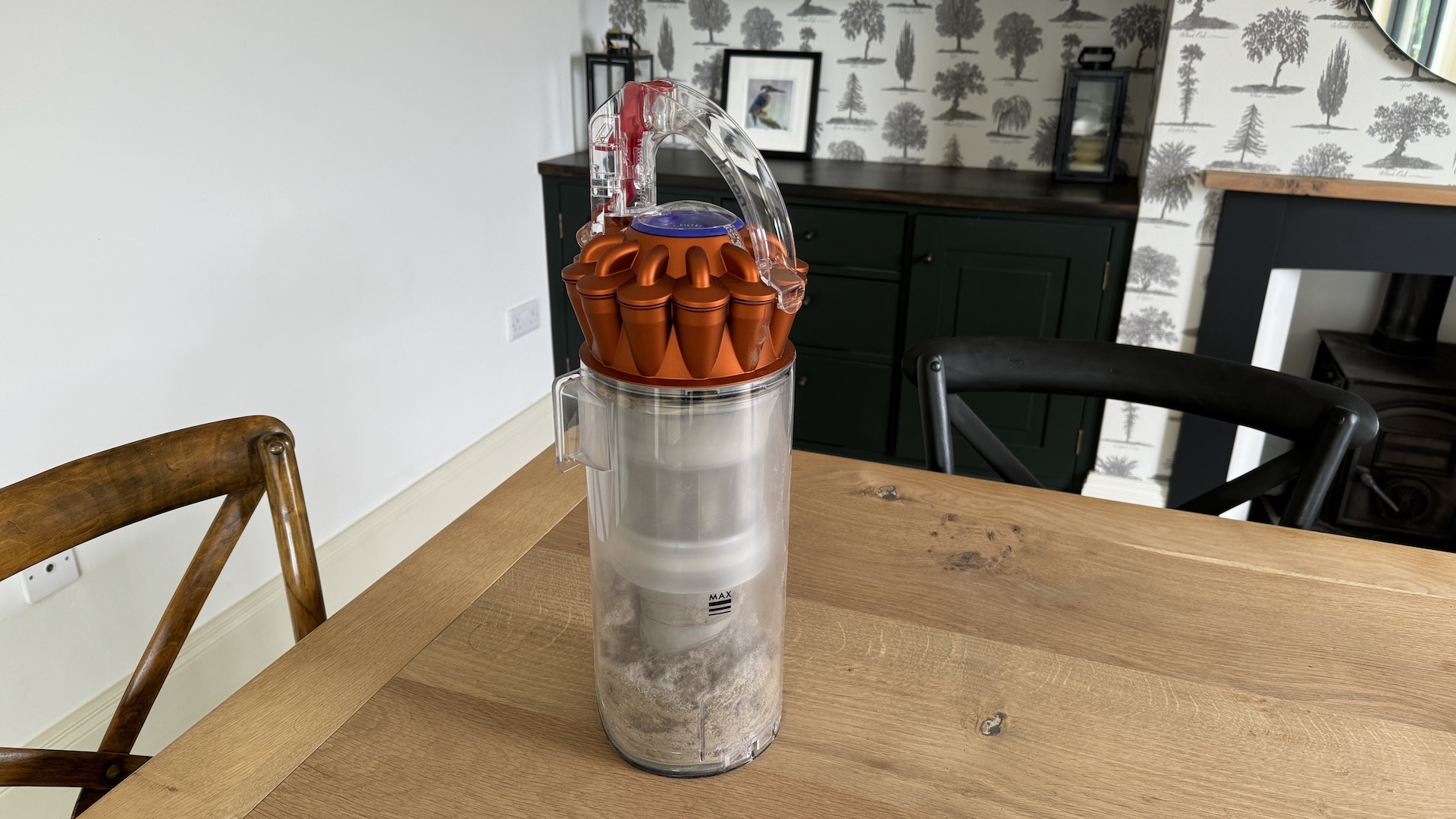
The Ball Animal’s impressive suction can create problems with maneuverability and, unless you are quick to adjust the suction at the floor head (with the slider control), it will drag carpets along or just prove impossible to push. This slider has three settings, one for deep and medium pile carpets, one for low pile and large debris and one for hard floors and ground in dirt.
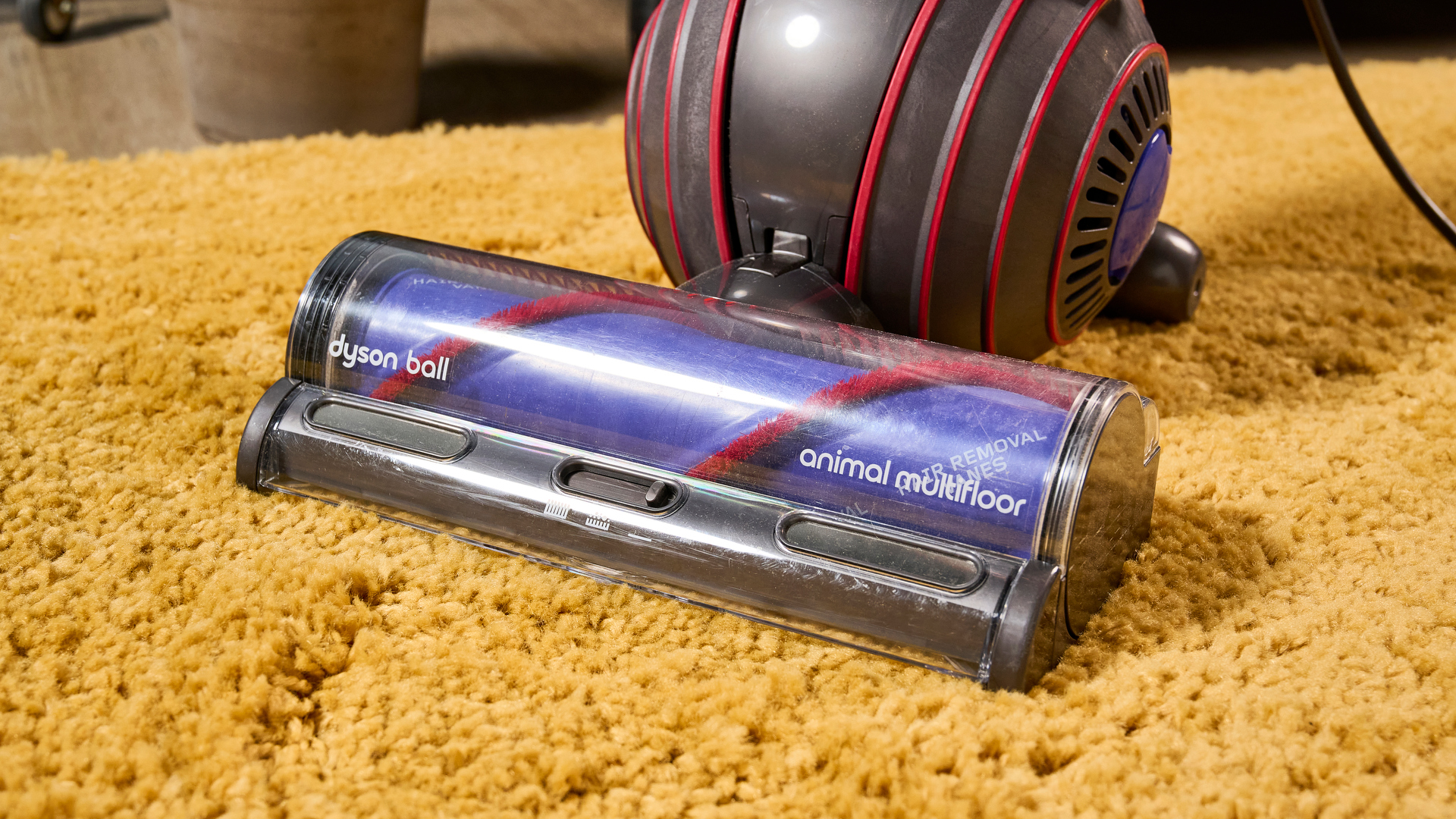
It is definitely worth figuring out which suction setting is best for your different floor types as soon as possible, but you do need to bend down to the floor to move the slider. Upstairs I didn’t have to move it once set, but as I have three types of flooring downstairs there was a lot of stopping and bending down to adjust the suction. I didn’t really mind, apart from the disruption (at 46 years old I can still bend down without effort), but maybe not so fine for elderly or infirm users. Many modern vacuum cleaners, especially cordless models, adjust the suction automatically and, frankly, Dyson needs to get with the program!
As I’ve said, moving the Ball Animal around the floors isn’t very easy and although it does corner well, it is heavy to move about and you can’t get it under any furniture. The cable is a complete pain in the rear and made me a bit sweary on several occasions. It’s 14m, which is handy in terms of not needing to move the plug to different sockets, but it just gets in the way. All the time.
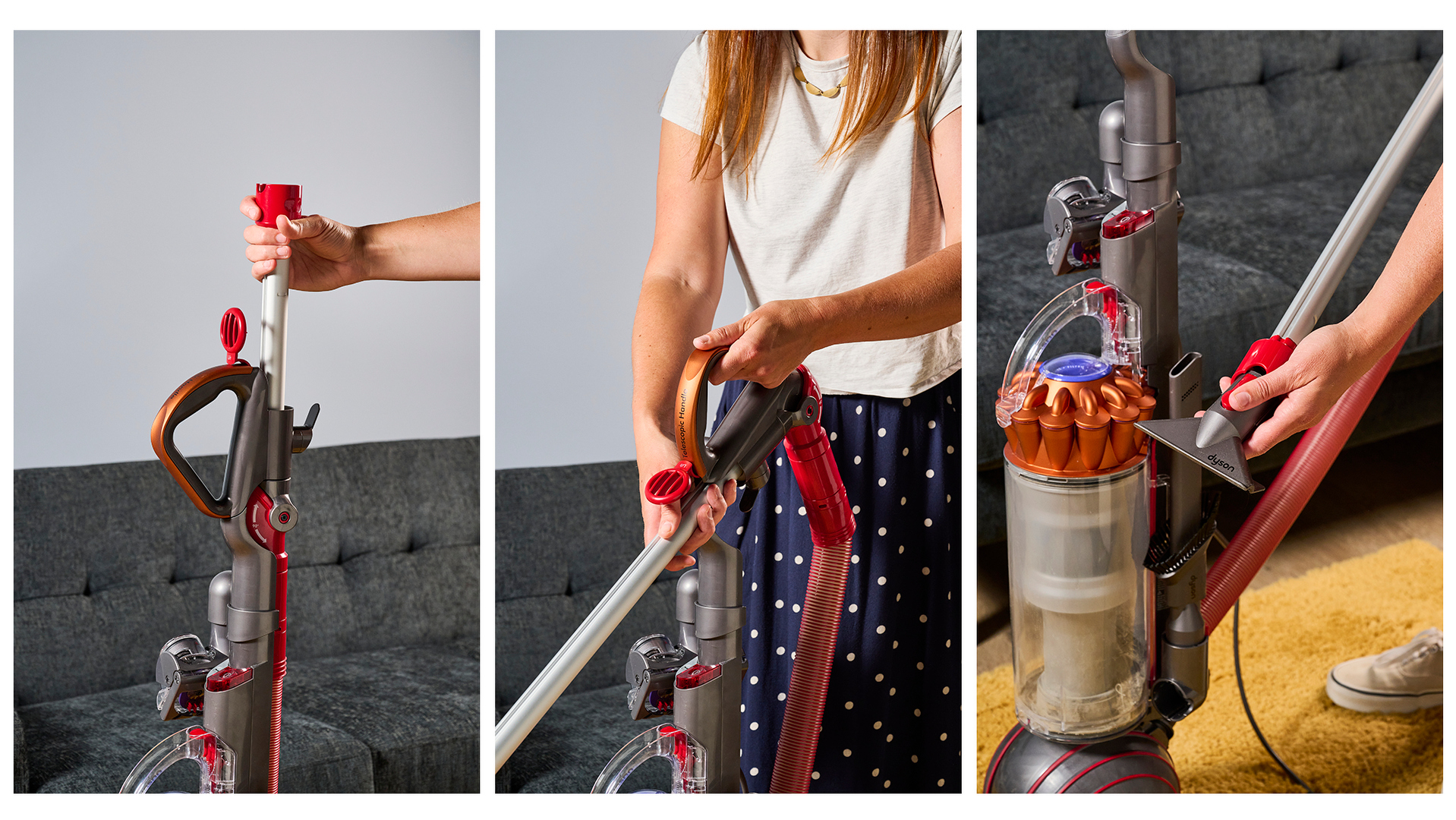
I found pulling out the hose, to vacuum up high and underneath the furniture, awkward and tricky. Perhaps the hose will soften eventually but it was really hard to stretch it to its full reach and it just didn’t flex well at all. I vacuumed our home throughout around 14 times during testing and had to take my sweater off every time because I worked up a sweat. I am pretty fit and healthy but using the Ball Animal was like an extra little workout that I really didn’t want or need!
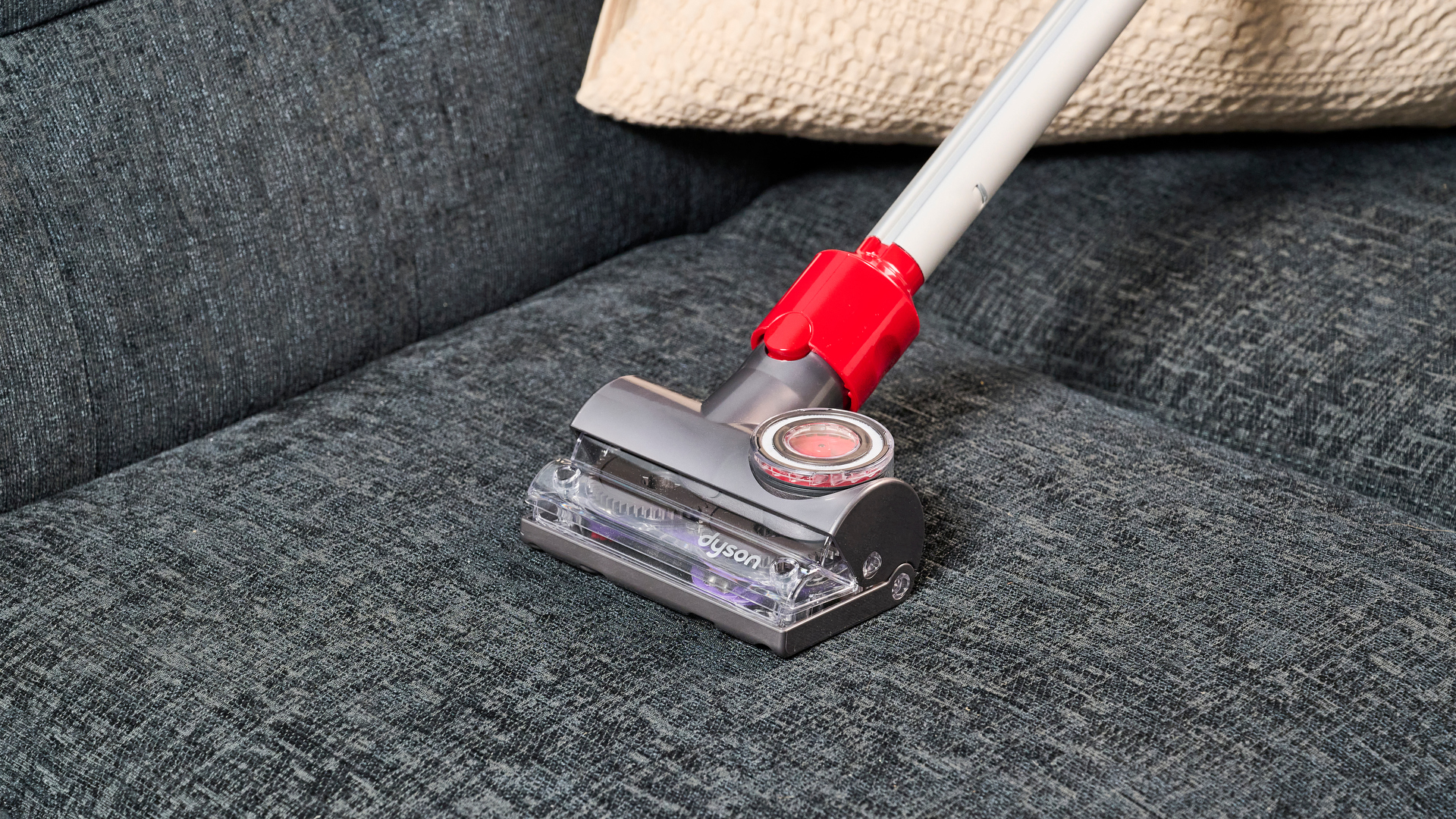
Saying all this, I can’t deny the Ball Animal did a great job at cleaning my home, especially on the pet hair front. We have two crazy-hairy spaniels and also had a heavily moulting labrador for a sleepover one weekend (how she had any hair to go home with I do not know). The tangle-free turbine tool was absolutely epic on our sofas and cushions and the main motor-driven floor brush lived up to its tangle-free promise, too. The bin was 99% dog hair after doing all three sofas and the main kitchen rug on one day.
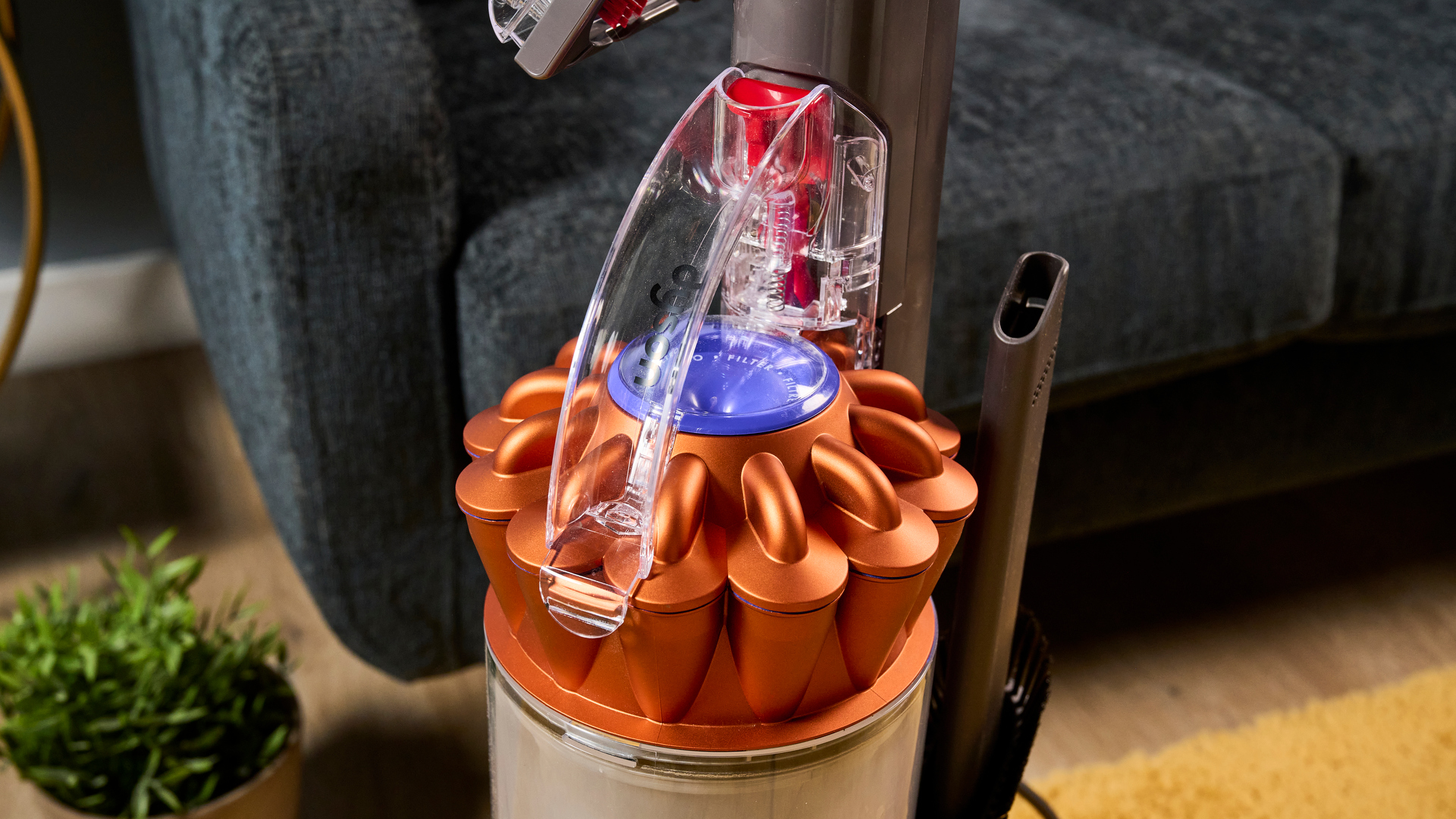
The results of our two standard controlled tests – one with flour and one with porridge oats (to mimic bigger debris), on both hard flooring and carpet – were interesting. On carpet, I couldn’t fault the Ball Animal, it cleared everything, thoroughly, in a single pass, but on the hard flooring (engineered oak), it left streaks of flour behind and required several passes. Oats on hard flooring was also problematic. The brush head seemed to ping them about, so I turned it off, which stopped that nonsense, but it still took several passes to get all the oats up.
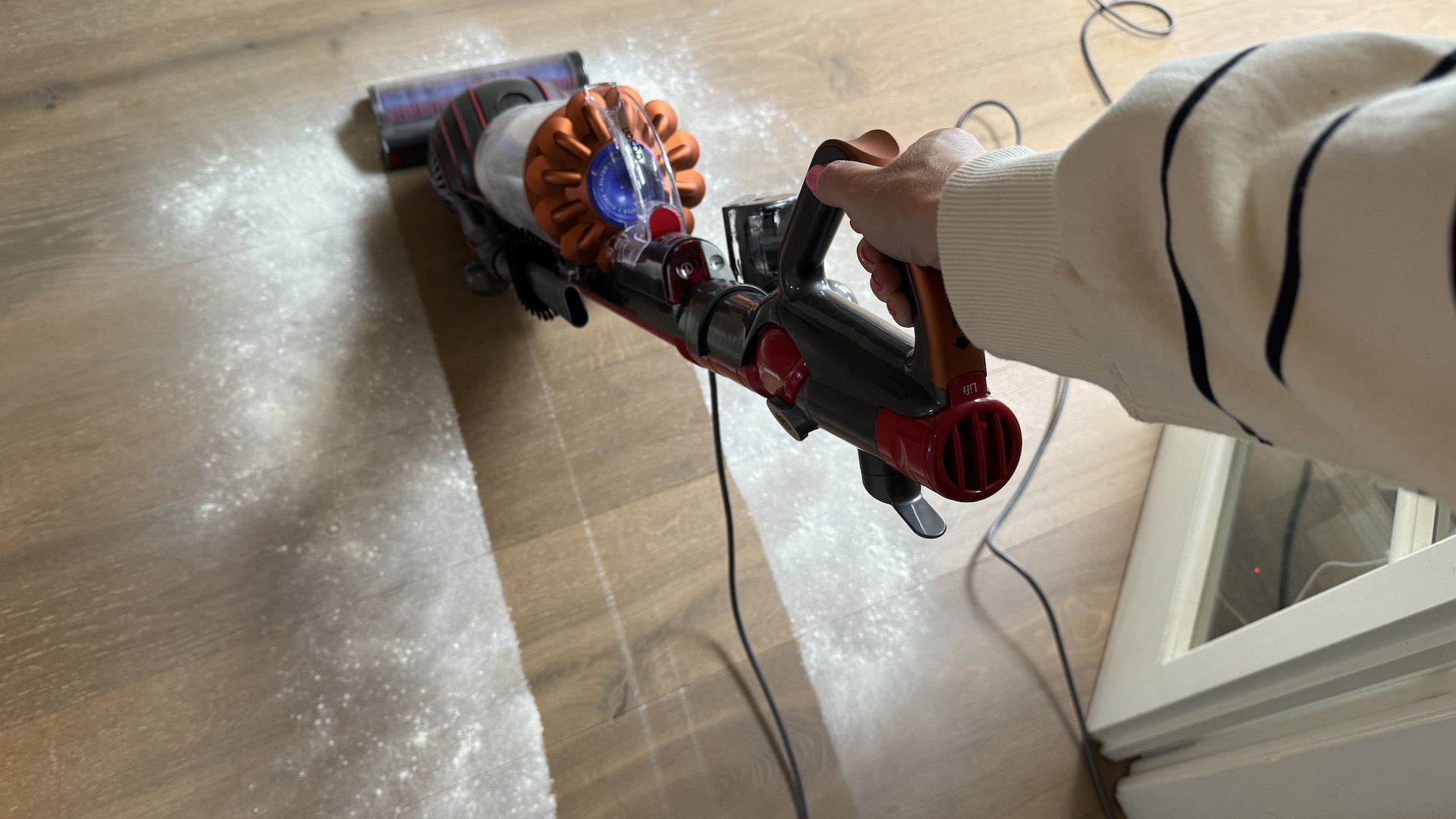
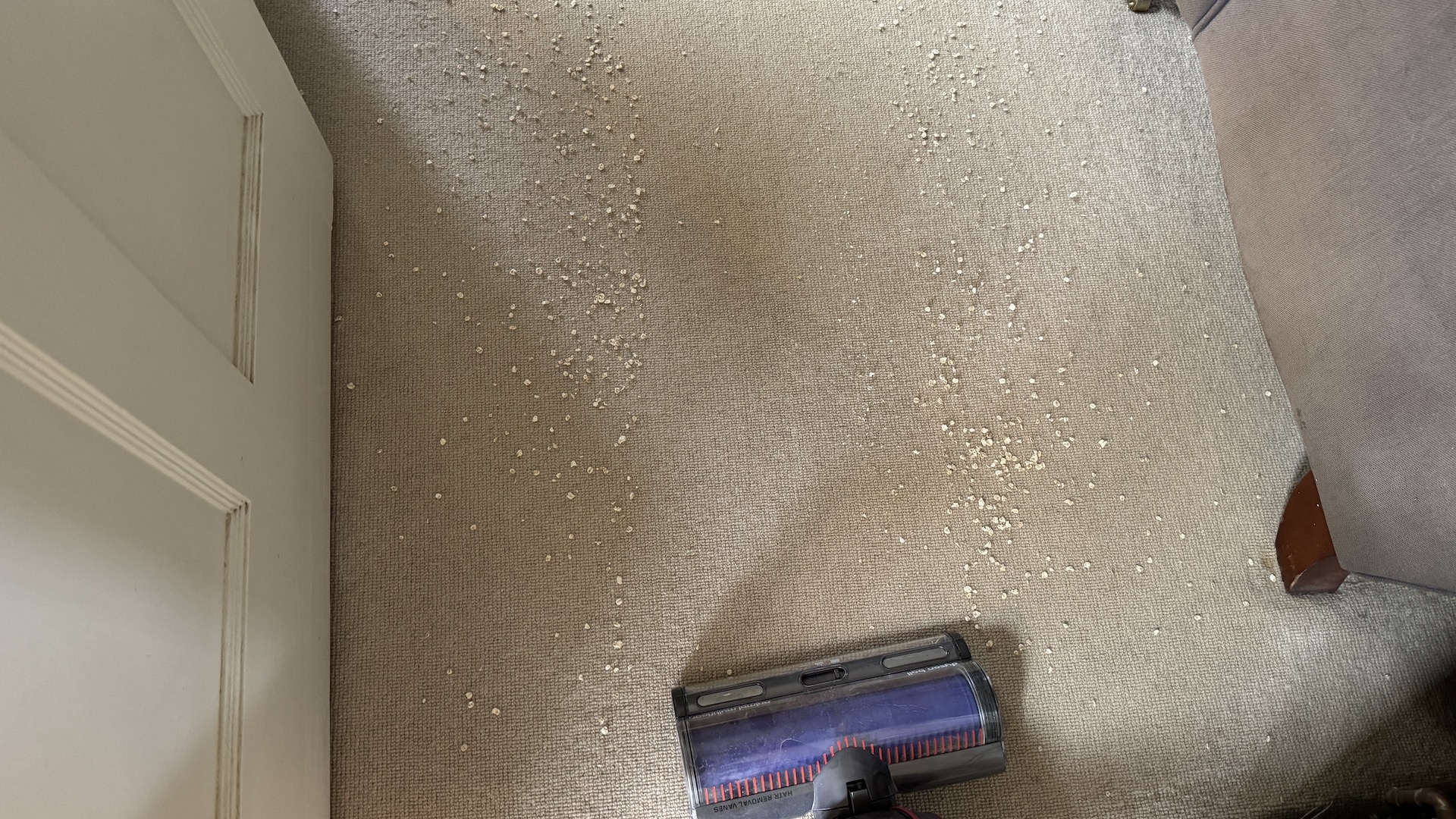
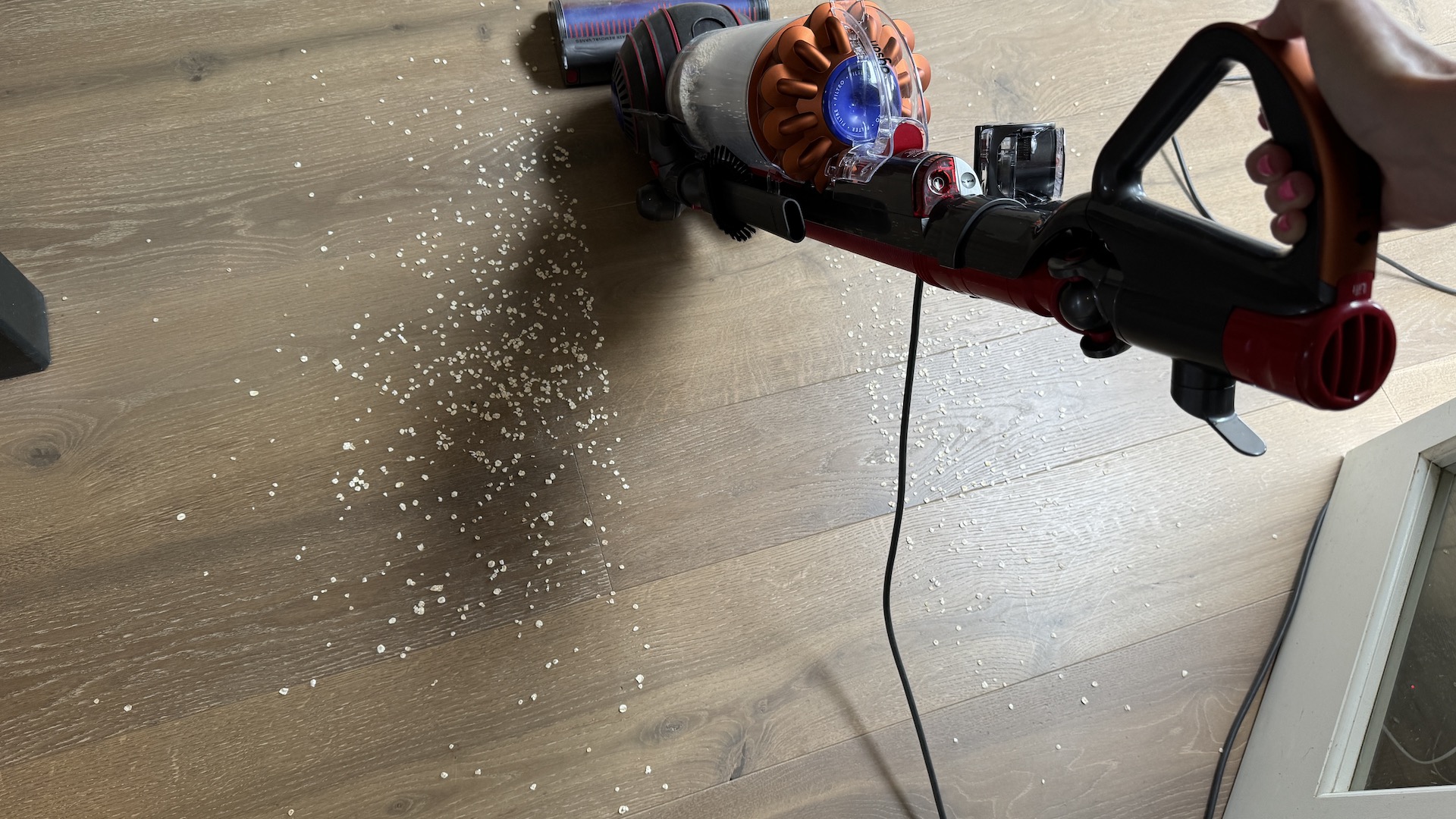
If, like me, you are noise intolerant, you will seriously not enjoy how loud the Ball Animal is. That's perhaps to be expected given the power levels going on, but my Decibel Meter recorded at 81dB, which is louder than most vacuum cleaners and closer to a busy food blender. As this vacuum is big, and the cord winding so annoying, I only really used it for thorough, whole house cleans (rather than a quick whip round with a cordless), so its noisiness was not appreciated. I couldn’t hear my audiobook, even with my EarPods in.
Maintenance
Cleaning the Dyson Ball Animal is mostly easy. The roller brush pulls out at one side of the floor head (and didn’t require any scissor work to release hairs) and the filter in the main cylinder is the same as those in Dyson’s cordless vacuums – a long, sock-like thing that you wash under a tap. There’s a second filter in the Ball, which was harder to release (you have to lie the vacuum on its side, unscrew the ball and then do a hard twist and turn action to pull the filter out) and also washes under the tap. Dyson recommends both filters are cleaned once a month to maintain efficiency, but I’d bet my left foot that most people don’t.
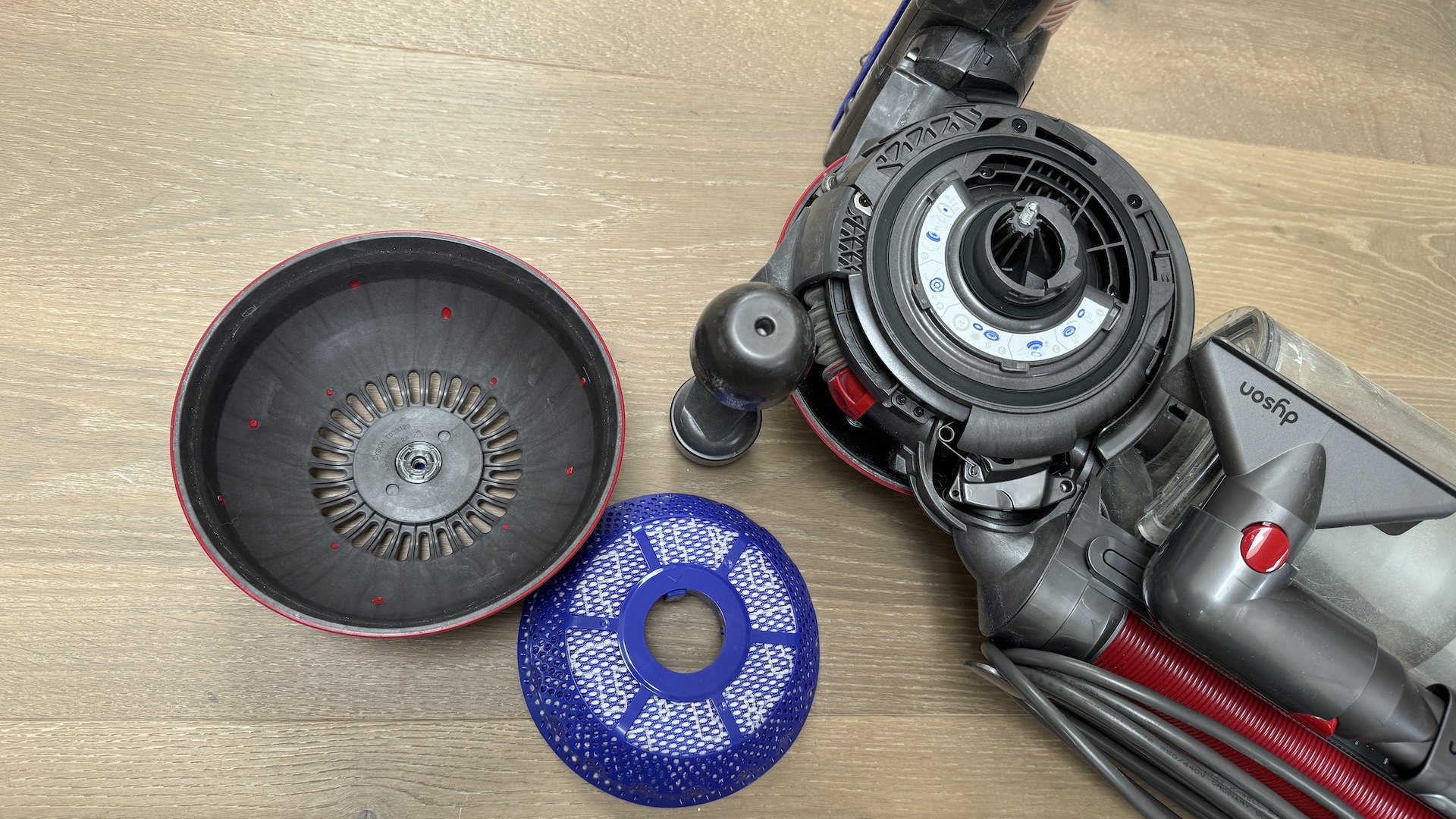
I have to admit I missed my light and nimble cordless vacuum many times during the two weeks I spent testing the Ball Animal and my previous conviction that uprights are impossibly cumbersome was not overturned. Sorry, Dyson.
- Performance score: 3 out of 5
Should I buy a Dyson Ball Animal?
The cleaning performance was very impressive on carpets and decent on hard floors, but I found it hard work to use.
Buy it if...
Don't buy it if...
How I tested the Dyson Ball Animal Multi-floor vacuum
- I used this vacuum in my own home for two weeks
- I vacuumed carpets, hard flooring, and upholstery
- I recorded the sound levels using a decibel meter app
I used the Dyson Ball Animal to clean our four-bed family home for a couple of weeks, using it every day on all our floors, which include terracotta and porcelain tiles, engineered timber, vinyl laminate, carpet and several rugs.
I also road-tested all five attachments (the upholstery one was my fave), vacuumed up the staircase and all three sofas. I took both brush heads apart to clean the rollers, cleaned both filters, and emptied the bin several times. I also cleaned the dog’s beds and had a go at the blinds with the softest brush attachment.
During testing, I used the decibel meter on my iPhone to monitor noise levels and conducted two specific tests to see how the vacuum dealt with flour and oats on carpet and hard flooring.
As part of my job as a journalist specialising in kitchens and bathrooms, I’ve been reviewing vacuum cleaners for publication both online and in print for several years now. I take testing very seriously and feel a real responsibility to provide honest, accurate feedback that’s (hopefully) useful and not biased in any way.
Read more about how we test
First reviewed July 2024
0 comments:
Post a Comment